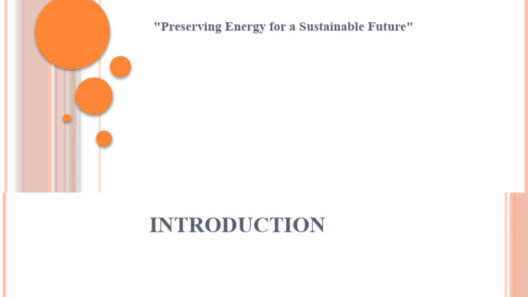The escalating turmoil surrounding climate change mirrors the proverbial canary in the coal mine. Amidst this urgent backdrop, energy conservation has emerged as a beacon of hope. Innovators are tirelessly seeking solutions that promise to optimize energy consumption, ultimately mitigating our ecological footprint. One such product that has caught the attention of eco-conscious consumers is the Conserva Energy Saver. But does this device truly deliver on its promises? To ascertain its efficacy, we embark on an investigative journey.
At its core, the Conserva Energy Saver is designed as a compact device that hooks into your electrical outlets, claiming to enhance electrical efficiency by regulating energy flow. It’s akin to a maestro guiding an orchestra, purportedly ensuring all notes resonate harmoniously without wasteful dissonance. The allure of such a device lies in its promise of reduced electricity bills while simultaneously contributing to a greener planet. But is the product simply a clever marketing ploy wrapped in an alluring package?
To begin with, energy consumption trends in the modern home provide a striking canvas on which to paint the need for inventions like the Conserva Energy Saver. With the proliferation of electronic devices—smartphones, tablets, and televisions—the average household’s energy usage has skyrocketed in recent decades. It’s as if each gadget is a hungry creature, voraciously consuming resources without pause. Implementing energy-saving measures through effective devices can significantly curtail this ravenous appetite.
However, one must delve beyond mere anecdotal evidence or user testimonials. Scientific methodologies must be employed to evaluate the claims espoused by manufacturers. Independent studies and assessments should elucidate the functionality of the Conserva Energy Saver. Dubious devices often thrive on vague terminologies like “energy optimization” without providing substantive data to back such claims.
Upon investigating the underlying technology of the Conserva Energy Saver, it appears that the device functions primarily by employing capacitor technology aimed at improving power factor. This is analogous to tuning a guitar before a performance; the goal is to reduce energy wastage caused by phase differences in voltage and current. However, this raises a pivotal question: Is the reduction in energy consumption significant enough to warrant investment? Preliminary reports suggest that the outcomes can be inconsistent, influenced heavily by existing electrical setups and load types within a household.
To further dissect its claims, let us explore what a “power factor” actually entails. In electrical engineering, power factor represents the ratio of real power flowing to the load to the apparent power in the circuit. A power factor closer to one indicates a more efficient system. While energy savers like the Conserva promise to correct power factor discrepancies, the reality is that many households may already have favorable power factors, rendering additional correction unnecessary. In such contexts, the device may achieve little more than serving as a shadow—an ephemeral presence with minimal impact.
Additionally, the installation of the Conserva Energy Saver resembles taming a wild stallion; while the device is plug-and-play, the true challenge lies in aligning its capabilities with your individual electrical ecosystem. Factors such as the age of electrical systems, types of appliances, and overall energy consumption habits play a critical role in determining the efficacy of this device. Homes characterized by older electrical infrastructure may find the device more beneficial than newer homes designed with energy efficiency in mind.
Moreover, the return on investment (ROI) is a crucial consideration for potential buyers. Energy-saving devices often tout savings that seem tantalizing on the surface. However, a thorough analysis of the payback period may reveal a different narrative. While some users report decreased bills, others encounter marginal drops that may take years to offset the initial expenditure. Like the tortoise and the hare, the journey to sustainable savings may demand patience from conscientious consumers.
The unique appeal of the Conserva Energy Saver resides in its embodiment of individual agency against the backdrop of climate catastrophe. It aligns with the ethos of personal responsibility—one small device contributing to broader ecological efforts. In the age of consumerism, this pathway fosters a profound sense of empowerment. Even if the scientific jury is still out on its long-term effects, the ideology it represents resonates deeply within the climate action community.
In an ever-evolving energy landscape, it’s essential to consider alternatives and complement the use of devices like the Conserva Energy Saver with holistic energy management practices. Energy audits, efficient appliances, and behavioral modifications such as unplugging devices can amplify conservation efforts. Each element plays a pivotal role, weaving together a tapestry of sustainability. The mantra of “reduce, reuse, and recycle” must remain at the forefront of our minds as we navigate the paradigm shift toward energy efficiency.
Ultimately, the investigation into the Conserva Energy Saver reveals a spectrum of perspectives that mirror the complexity of energy conservation itself. While it may not be a panacea, it embodies an intriguing contribution to the quest for a sustainable future. Whether deemed effective or ineffectual, conversations around such devices ignite awareness and pave the way for more conscientious energy use.
In closing, the narrative surrounding the Conserva Energy Saver forces us to grapple with larger philosophical questions about our consumption patterns and responsibilities toward the planet. Each decision we make can either nurture or deplete our shared home. As we aim to transform the tide of climate change, we must embrace not only the inventions of tomorrow but the rigorous discourse surrounding them. After all, in an age defined by intricate environmental dilemmas, enlightening discussions catalyze collective progress.







